A comedy film is a category of film which emphasizes humor. These films are designed to make the audience laugh through amusement. Films in this style traditionally have a happy ending. One of the oldest genres in film—and derived from the classical comedy in theatre—some of the earliest silent films were comedies, as slapstick comedy often relies on visual depictions, without requiring sound. When sound films became more prevalent during the 1920s, comedy films took another swing, as laughter could result from burlesque situations but also dialogue.
A chronicle is a historical account of events arranged in chronological order, as in a time line. Typically, equal weight is given for historically important events and local events, the purpose being the recording of events that occurred, seen from the perspective of the chronicler. A chronicle which traces world history is a universal chronicle. This is in contrast to a narrative or history, in which an author chooses events to interpret and analyze and excludes those the author does not consider important or relevant.
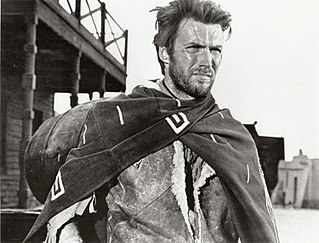
A film genre is a stylistic or thematic category for motion pictures based on similarities either in the narrative elements, aesthetic approach, or the emotional response to the film.
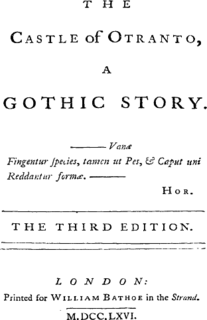
Gothic fiction, sometimes called Gothic horror in the 20th century, is a loose literary aesthetic of fear and haunting. The name is a reference to Gothic architecture of the European Middle Ages, which was characteristic of the settings of early Gothic novels. The first work to call itself Gothic was Horace Walpole's 1764 novel The Castle of Otranto, later subtitled "A Gothic Story". Subsequent 18th century contributors included Clara Reeve, Ann Radcliffe, William Thomas Beckford and Matthew Lewis. The Gothic also influenced poetry by Samuel Taylor Coleridge and John Keats. Its 19th century successes include Mary Shelley's Frankenstein and work by E. T. A. Hoffmann, Edgar Allan Poe and Charles Dickens. Later prominent works were Dracula by Bram Stoker, Richard Marsh's The Beetle and Robert Louis Stevenson's Strange Case of Dr Jekyll and Mr Hyde. Twentieth-century contributors include Daphne du Maurier, Stephen King, Shirley Jackson, Anne Rice and Toni Morrison.

Poetry is a form of literature that uses aesthetic and often rhythmic qualities of language − such as phonaesthetics, sound symbolism, and metre − to evoke meanings in addition to, or in place of, a prosaic ostensible meaning. A poem is a literary composition, written by a poet, using this principle.
Historical fiction is a literary genre in which the plot takes place in a setting related to the past events, but is fictional. Although the term is commonly used as a synonym for the historical romance, it can also be applied to other types of narrative, including theatre, opera, cinema, and television, as well as video games and graphic novels.
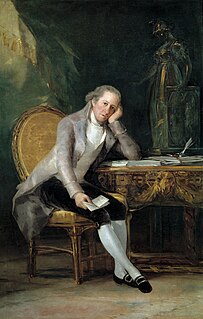
A writer is a person who uses written words in different writing styles and techniques to communicate ideas. Writers produce different forms of literary art and creative writing such as novels, short stories, books, poetry, travelogues, plays, screenplays, teleplays, songs, and essays as well as other reports and news articles that may be of interest to the general public. Writers' texts are published across a wide range of media. Skilled writers who are able to use language to express ideas well, often contribute significantly to the cultural content of a society.
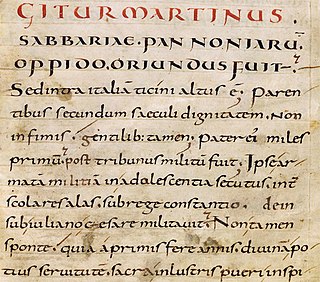
A hagiography is a biography of a saint or an ecclesiastical leader, as well as, by extension, an adulatory and idealized biography of a founder, saint, monk, nun or icon in any of the world's religions. Early Christian hagiographies might consist of a biography or vita, a description of the saint's deeds or miracles, an account of the saint's martyrdom, or be a combination of these.

Irish music is music that has been created in various genres on the island of Ireland.

Romance films or romance movies are romantic love stories recorded in visual media for broadcast in theaters and on television that focus on passion, emotion, and the affectionate romantic involvement of the main characters and the journey that their love takes them through dating, courtship or marriage. Romance films make the romantic love story or the search for strong and pure love and romance the main plot focus. Occasionally, romance lovers face obstacles such as finances, physical illness, various forms of discrimination, psychological restraints or family that threaten to break their union of love. As in all quite strong, deep and close romantic relationships, tensions of day-to-day life, temptations, and differences in compatibility enter into the plots of romantic films.
An aubade is a morning love song, or a song or poem about lovers separating at dawn. It has also been defined as "a song or instrumental composition concerning, accompanying, or evoking daybreak".
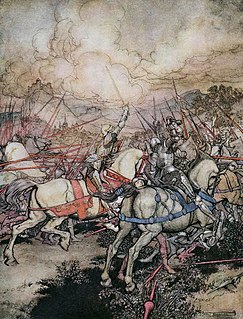
Historical fantasy is a category of fantasy and genre of historical fiction that incorporates fantastic elements into a more "realistic" narrative. There is much crossover with other subgenres of fantasy; those classed as Arthurian, Celtic, or Dark Ages could just as easily be placed in historical fantasy. Stories fitting this classification generally take place prior to the 20th century.
Postmodern literature is a form of literature that is characterized by the use of metafiction, unreliable narration, self-reflexivity, intertextuality, and which often thematizes both historical and political issues. This style of experimental literature emerged strongly in the United States in the 1960s through the writings of authors such as Kurt Vonnegut, Thomas Pynchon, William Gaddis, Philip K. Dick, Kathy Acker, and John Barth. Postmodernists often challenge authorities, which has been seen as a symptom of the fact that this style of literature first emerged in the context of political tendencies in the 1960s. This inspiration is, among other things, seen through how postmodern literature is highly self-reflexive about the political issues it speaks to.
In English literature, the term comedy of manners describes a genre of realistic, satirical comedy of the Restoration period (1660–1710) that questions and comments upon the manners and social conventions of a greatly sophisticated, artificial society. The satire of fashion, manners, and outlook on life of the social classes, is realised with stock characters, such as the braggart soldier of Ancient Greek comedy, and the fop and the rake of English Restoration comedy. The clever plot of a comedy of manners is secondary to the social commentary thematically presented through the witty dialogue of the characters, e.g. The Importance of Being Earnest (1895), by Oscar Wilde, which satirises the sexual hypocrisies of Victorian morality.
A fantasia is a musical composition with roots in improvisation. The fantasia, like the impromptu, seldom follows the textbook rules of any strict musical form.
Paradoxography is a genre of Classical literature which deals with the occurrence of abnormal or inexplicable phenomena of the natural or human worlds.

An immram is a class of Old Irish tales concerning a hero's sea journey to the Otherworld. Written in the Christian era and essentially Christian in aspect, they preserve elements of Irish mythology.

Comedy is a genre of fiction that consists of discourses or works intended to be humorous or amusing by inducing laughter, especially in theatre, film, stand-up comedy, television, radio, books, or any other entertainment medium. The term originated in ancient Greece: in Athenian democracy, the public opinion of voters was influenced by political satire performed by comic poets in theaters. The theatrical genre of Greek comedy can be described as a dramatic performance pitting two groups, ages, genders, or societies against each other in an amusing agon or conflict. Northrop Frye depicted these two opposing sides as a "Society of Youth" and a "Society of the Old". A revised view characterizes the essential agon of comedy as a struggle between a relatively powerless youth and the societal conventions posing obstacles to his hopes. In this struggle, the youth then becomes constrained by his lack of social authority, and is left with little choice but to resort to ruses which engender dramatic irony, which provokes laughter.
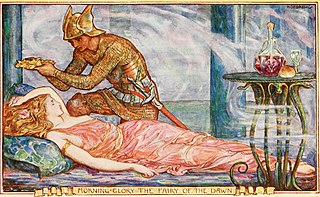
Fantasy is a genre of speculative fiction involving magical elements, typically set in a fictional universe and sometimes inspired by mythology and folklore. Its roots are in oral traditions, which then became fantasy literature and drama. From the twentieth century, it has expanded further into various media, including film, television, graphic novels, manga, animated movies and video games.

In film and television, drama is a category of narrative fiction intended to be more serious than humorous in tone. Drama of this kind is usually qualified with additional terms that specify its particular super-genre, macro-genre, or micro-genre, such as soap opera, police crime drama, political drama, legal drama, historical drama, domestic drama, teen drama, and comedy-drama (dramedy). These terms tend to indicate a particular setting or subject-matter, or else they qualify the otherwise serious tone of a drama with elements that encourage a broader range of moods. To these ends, a primary element in a drama is the occurrence of conflict—emotional, social, or otherwise—and its resolution in the course of the storyline.











